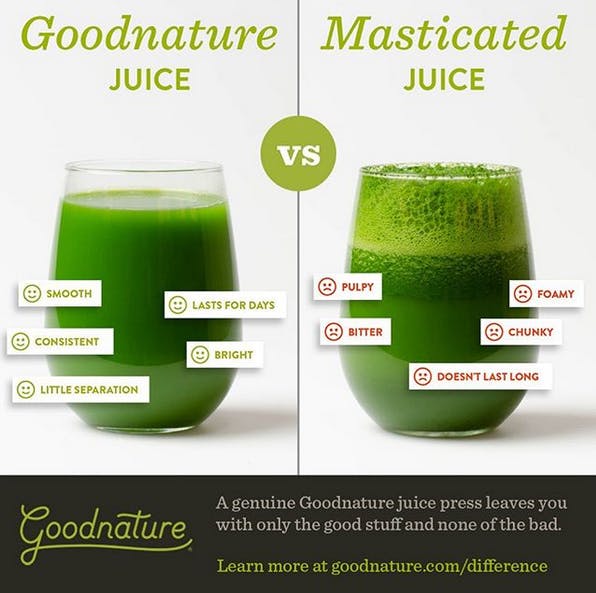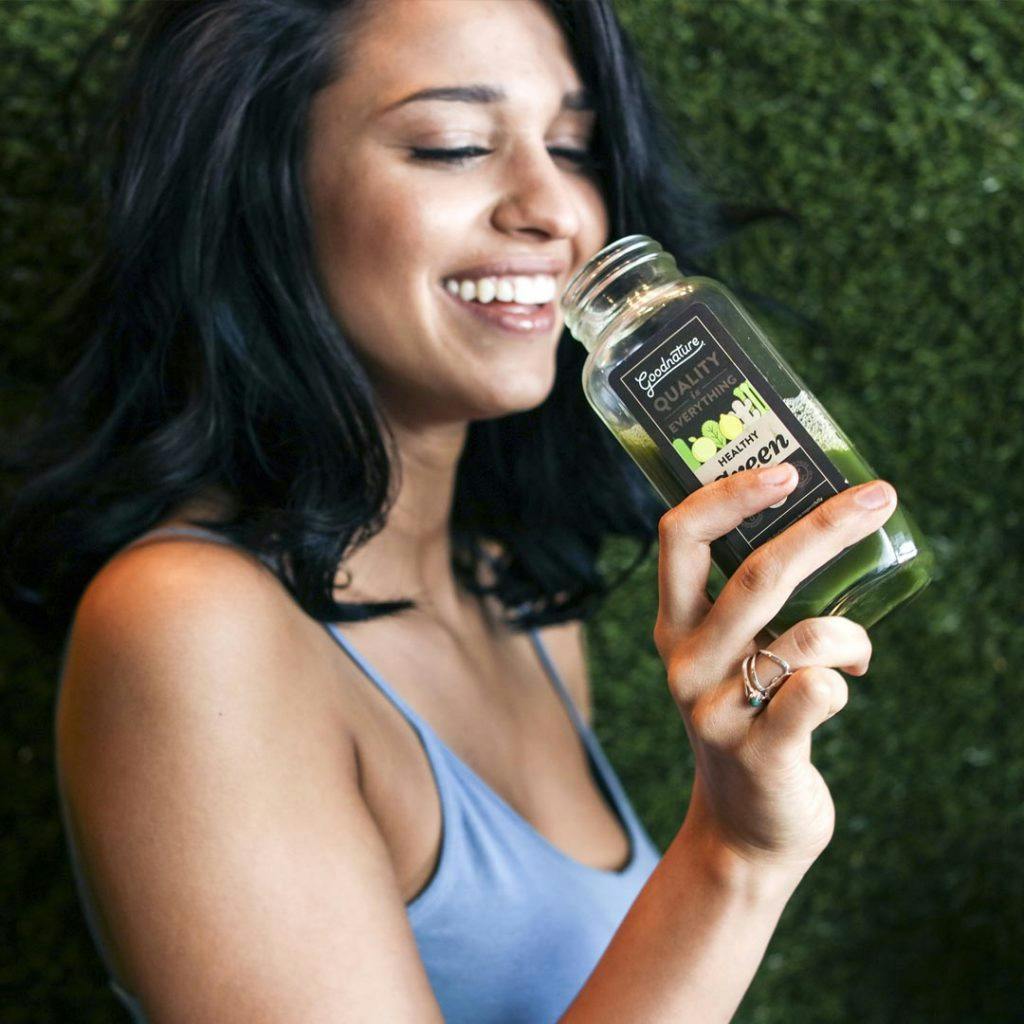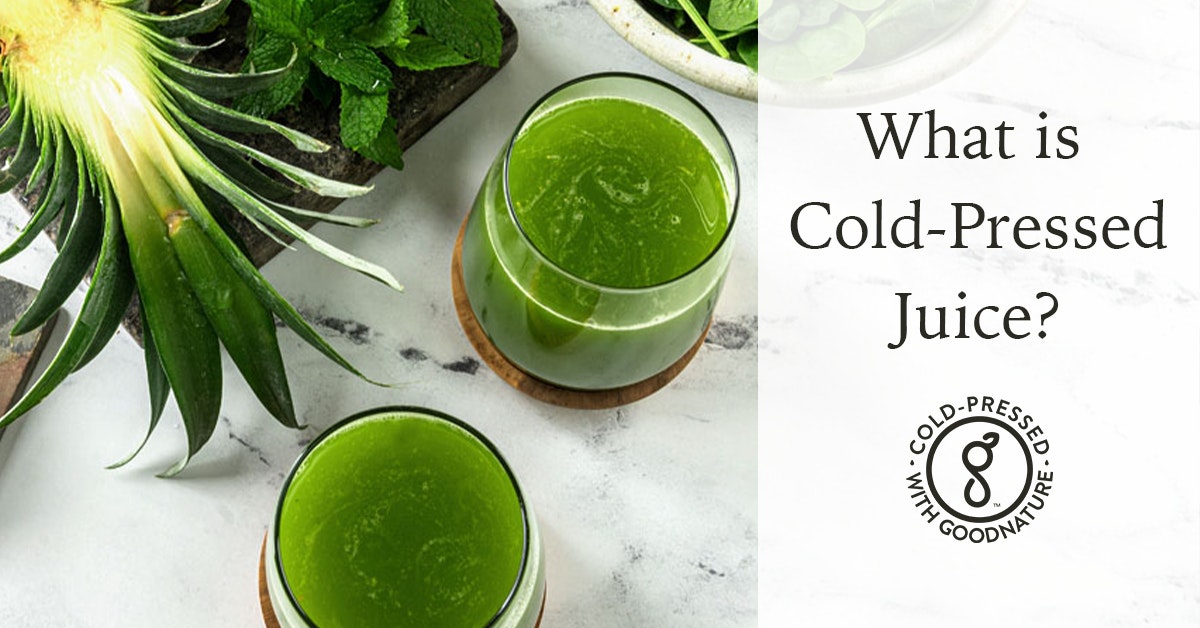What is cold-pressed juice? And why is it so much better than other types of juices?
Cold-pressed juice is juice made with a press that exerts thousands of pounds of pressure, extracting the maximum yield from fruits and vegetables. Because of this simple and fascinating process, cold-pressed juice is more nutrient-dense, delicious, and healthier than juice made via other methods like "slow" or "masticating" juicers. Cold-pressed juice also stays fresh for a longer period of time, mostly due to how the juice is extracted.
Pro tip: It's a common misconception that masticating juicers are "cold press juicers" since they are marketed that way. They are actually a single step process of forcing the produce through a metal screen using a slow turning screw. Although this method is better than fast spinning centrifugal juicers, only an actual juice press is truly "cold pressed", since it's the only style that actually contains a press.

These attributes have led to an explosion in cold-pressed juice interest. In April of 2022, Fortune Business Insights stated that the cold-pressed juice market is projected to grow from $1.15 billion to nearly $2 billion by 2029.
With the increase of cold-pressed juice, we think now is a great time to explain what it is and how it’s made. Here’s what we’ll cover in this article:
Health Benefits of Cold-Pressed Juice
When making cold-pressed juice, the fresh fruits and vegetables are first placed into a grinder, which cuts the fruit into small pieces to open the plant cells as much as possible before pressing. From there, the ground up produce is placed into a hydraulic or pneumatic (air cylinder powered) press that applies pressure to the produce to extract the maximum amount of juice from the pulp. Because of the two steps in this process, it's also sometimes referred to as "two stage" juicing. This method preserves the integrity of the juice, leaving it packed full with its original nutrients. Cold-pressed juice is known for its health benefits including:
- Boosting the body’s immune system with vitamin C
- Lowering cholesterol
- Promoting weight loss
- Increasing energy
- Anti-inflammatory
- Improving vision and eye health
- Protecting against disease
- Improving skin imperfections
- Assisting in body detox

The Cold-Pressed Method & Equipment
We like to compare the juicing process to a nice produce massage – we like to say that happy juice comes from happy fruit! In the cold-press juicing process, there is minimal damage done to the produce, which preserves the nutrients, color, and vibrant taste.
There are several different types of juicers that can be used to make raw juice, but only a real juice press can make real cold-pressed juice. Each type of juicer comes with their own benefits and considerations.
- Centrifugal Juicer
This juicer forces the produce towards and through a sharp screen by a moving blade with sharp teeth that produces the juice at a high speed around 6,000-14,000 RPM. This creates heat and oxidation which damages nutrients. This is one of the most common household juicers on the market. It provides consumers with a quick, easy juice that is made for instant consumption. The juice that is made from a centrifugal juicer tends to separate quickly and includes up to 30% solids including skins, seeds, and stems. - Masticating Juicer (Slow Juicer)
The fruits and veggies are pushed through a chute and are slowly squeezed and forced through a sharp screen at 80-100 RPM. The result is a juice high in solids with lots of indigestible fiber. The juice from a masticating juicer tends to separate more slowly than the juice made from a centrifugal juicer, but still much faster than a real press. These juicers can be ideal for people juicing at home that do not mind the extensive cleaning process and plan to make juice that is intended to be served immediately. - Twin-Gear Juicer
Similar to the other juicers, twin-gear juicers slowly extract juice from produce by forcing the plants up against a sharp screen at 80-120 RPM with less heat and oxidation than centrifugal. The juice is a pulpy, foamy product that can be bitter to taste and has a thick and chunky mouth-feel. Again, these juicers can be ideal for people juicing at home that do not mind the extensive cleaning process and plan to make juice that is intended to be served immediately. - Juice Press
A real juice press is the best juicer on the market for creating true cold-pressed juice. This press creates the most amount of juice with around 99% liquid and less than 1% pulp. It also makes juice with the longest shelf life (around 5-7 days) due to its minimal heat and oxidation. No extra processing needed.
Note: Want to craft super tasty juice recipes based on your favorite ingredients?
The Juicing Companion is a must-get book if you want your homemade recipes to taste amazing.
The concept is simple...
Choose which ingredient you want to juice, then open to that page in the book to find tasty flavor pairings, nutritional information, and recipe ideas to get you started.
If you want your recipes to taste delicious, get this juice recipe guide book.
Shelf Life
We are frequently asked about the shelf life of cold-pressed juice once it has been bottled. The truth is, there are many factors that influence the shelf life of cold-pressed juice. By “shelf life” we are referring to color and taste – we make no claim of the health or safety*. There are shelf life laws that vary by region, make sure to follow your area’s government guidelines. Here are some tips for getting the most out of your cold-pressed juice shelf life:
- Use Quality Produce
Purchasing produce from a trusted source and making sure it’s as fresh as possible will benefit your shelf life. Avoid using rotting, oxidized, or pre-chopped produce in your juice – this will decrease your self life and has the possibility of affecting your final outcome. - Keep an Eye on Temperature
If you want your cold-pressed juice to remain high-quality, keeping your product cold throughout the entire juicing process is extremely important. The FDA recommends at or below 41° F (5° C). This also includes keeping an eye on the temperature during transportation, especially if you are a wholesale distributor. - Acidity
Juices that contain higher acidity will tend to last longer than those with low acidity. When forming recipes for your juice, we generally recommend adding acidic fruits to your recipes when possible to improve shelf life. - Equipment
A quality juice press gives you the benefit of creating cold-pressed juice that has a much longer shelf life than those made with other juicers. Other juicing equipment use various methods to extract the juice from the produce. If the produce is not pressed properly, this may cause your juice to separate and spoil much quicker.
For in-depth info on shelf-life, check out our article- Understanding Shelf Life of Cold-Pressed Juice.
High-Pressure Processing (HPP)
When making raw cold-pressed juice, the shelf life is around three to seven days, depending on the recipe and temperature. To extend the shelf life of juice, high-pressure processing is a common practice that is used by large national brands. This pasteurization method kills at least 99.999% of the microorganisms that are found in juice. Here’s a quick overview of the process:
- Cold-pressed juice is made in a juice press and bottled in plastic bottles.
- The plastic bottles are placed into a chamber that fills with water and pressurizes the bottles to 58,000 PSI.
- The pressure maintains for several minutes then releases.
- Bottles are removed and now have a shelf life of 30-45 days.
Just like that, the juice that was placed into the chamber now has an extended shelf life. It is FDA law that cold-pressed juice must undergo a process similar to HPP or Pasteurization in order to be distributed wholesale.
If you’ve purchased cold-pressed juice from a grocery store, odds are it has undergone HPP, even if it doesn’t say so on the label (it is not required to list processing steps on a food label). If you are making juice and then selling the juice straight to the consumer, HPP is not required.
If you’re thinking about starting your own juicing business or are looking to break into cold-pressed juice, learn about our industry-leading juicers here.
What’s Your Favorite Type of Cold-Pressed Juice?
Carrot? Green juice? What are your favorite recipes? Let us know in the comments below.
If you want to browse a bunch of delicious, chef-made juice recipes, check out our juicing recipes.
Comments
Amazing Post Thanks For Sharing
So, how many carrots does it take to make an 8 ounce glass of juice and how much waste is generated?
Hi Larry,
It takes about 14 oz of carrots (about 6 carrots) to make one 8 oz glass of juice. You can use the leftover pulp to make food recipes or for garden compost. Some juice bars even donate their leftover pulp to farms for animal feed. You can find our juice pulp recipes here: https://www.goodnature.com/recipes/?recipe_tags=pulp-recipes
hi, grat article, I only have a question. Does the fruit n vegetable grind applies some sor of heat on the produce, and how this oxidate the juice ?
No it just cuts the produce. The juice extraction is done in the press, not the grinder.


Comment